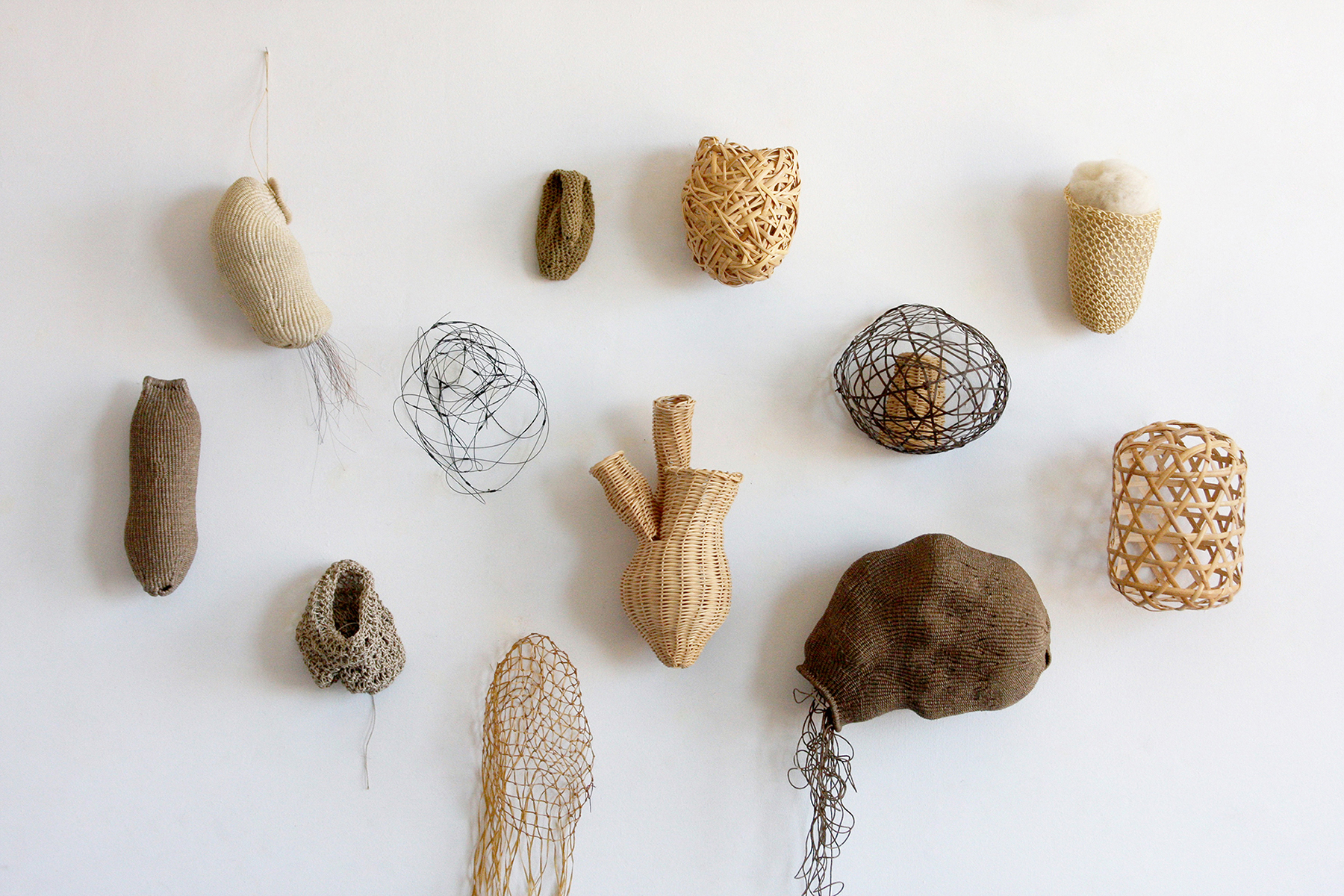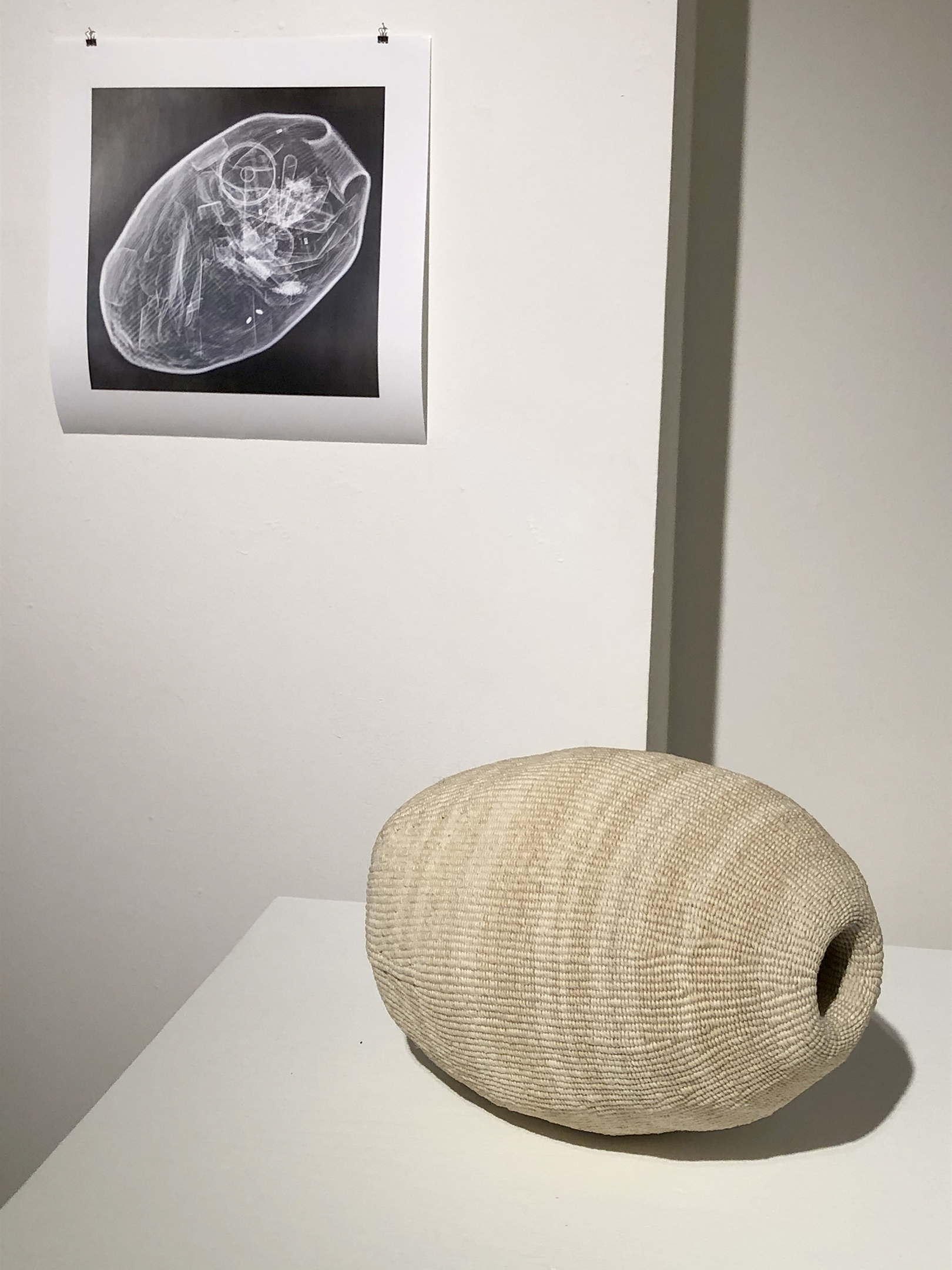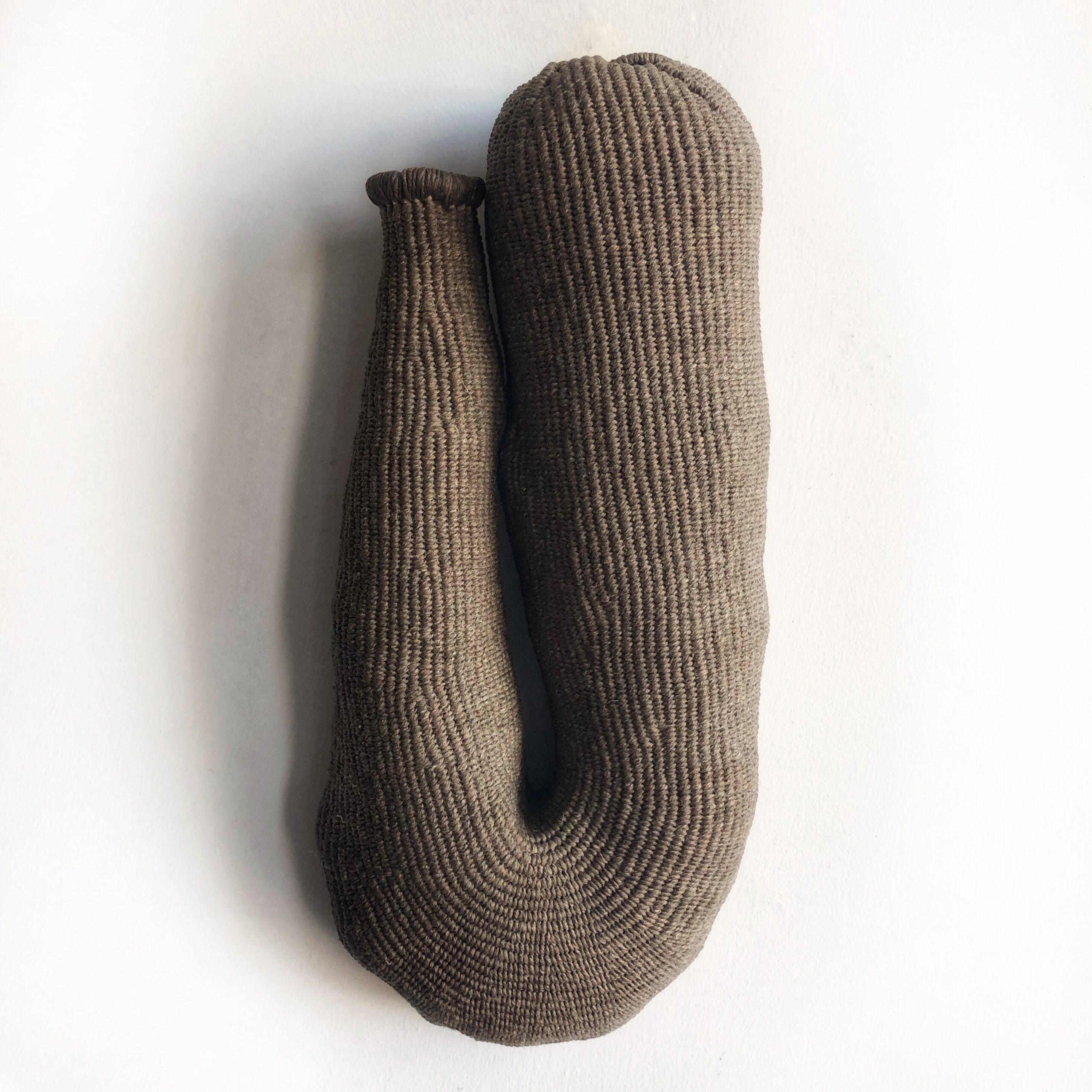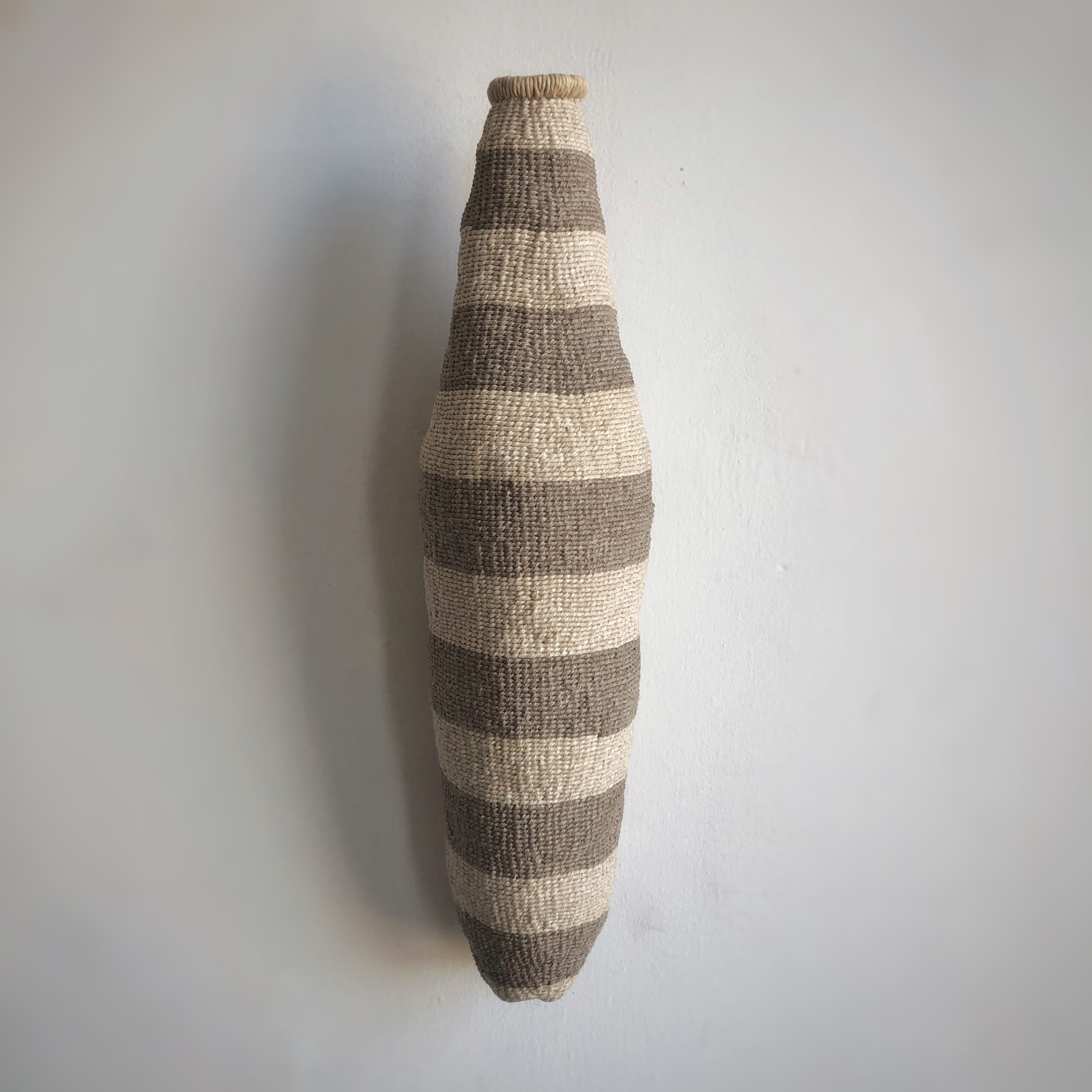Ann Coddington
Ann Coddington
dozen grouping, 2020
mixed media fibers 72x48x10
This group of works is an ongoing series of playful explorations of form and texture. Some refer to objects in the known world, while others are purely abstract. The grouping is meant to provoke visual connections between forms, textures and processes.
Ann Coddington
albatross 1, 2020
Twined linen and discarded plastic 20x11x11
Recently, I saw a picture of an albatross that was decomposing on the beach, the inside of its body filled with plastic bits. I decided to create a series of work that directly confronted the reality of my part in the plastic waste cycle. I created a woven vessel to contain plastic that I had collected over a month’s time, some mine, some found as I was walking. The woven vessel, like the body of the albatross, will most certainly decompose long before the plastic within, but perhaps by then we will have found a viable way to take responsibility for our waste. In addition, I also x-ray the forms to reveal the plastic hidden inside. What appears elegant, organic and pure, like the body of the albatross, hides discarded detritus within. In truth, I do not want to fill my art with plastic. But none of us actually wants to fill our creatures, our oceans, our planet with plastic; and yet, we are. I had to find a way to take responsibility for my waste, to bring this conversation to the forefront of my work.
Ann Coddington
albatross 8, 2020
Twined linen and discarded plastic 20x12x5
Recently, I saw a picture of an albatross that was decomposing on the beach, the inside of its body filled with plastic bits. I decided to create a series of work that directly confronted the reality of my part in the plastic waste cycle. I created a woven vessel to contain plastic that I had collected over a month’s time, some mine, some found as I was walking. The woven vessel, like the body of the albatross, will most certainly decompose long before the plastic within, but perhaps by then we will have found a viable way to take responsibility for our waste. In addition, I also x-ray the forms to reveal the plastic hidden inside. What appears elegant, organic and pure, like the body of the albatross, hides discarded detritus within. In truth, I do not want to fill my art with plastic. But none of us actually wants to fill our creatures, our oceans, our planet with plastic; and yet, we are. I had to find a way to take responsibility for my waste, to bring this conversation to the forefront of my work.
Ann Coddington
albatross 10, 2020
Twined linen and discarded plastic 16x4x4
Recently, I saw a picture of an albatross that was decomposing on the beach, the inside of its body filled with plastic bits. I decided to create a series of work that directly confronted the reality of my part in the plastic waste cycle. I created a woven vessel to contain plastic that I had collected over a month’s time, some mine, some found as I was walking. The woven vessel, like the body of the albatross, will most certainly decompose long before the plastic within, but perhaps by then we will have found a viable way to take responsibility for our waste. In addition, I also x-ray the forms to reveal the plastic hidden inside. What appears elegant, organic and pure, like the body of the albatross, hides discarded detritus within. In truth, I do not want to fill my art with plastic. But none of us actually wants to fill our creatures, our oceans, our planet with plastic; and yet, we are. I had to find a way to take responsibility for my waste, to bring this conversation to the forefront of my work.



